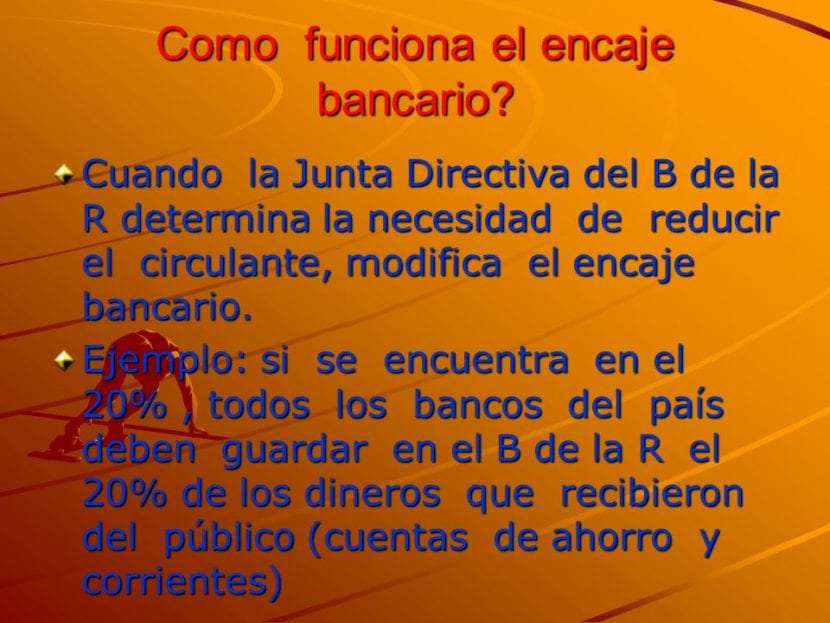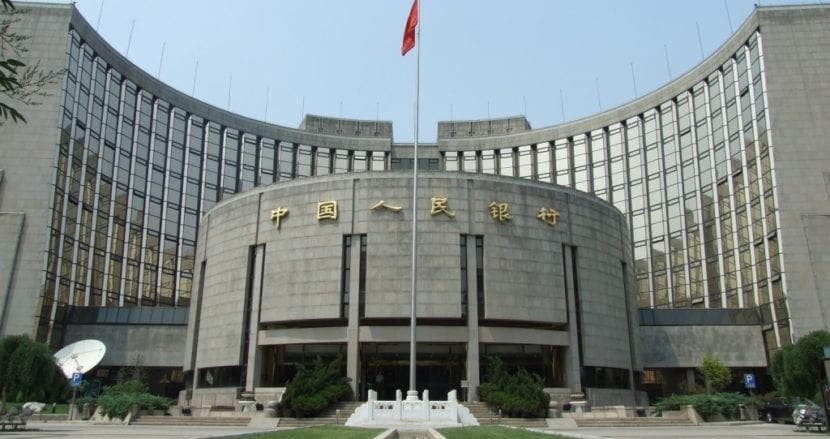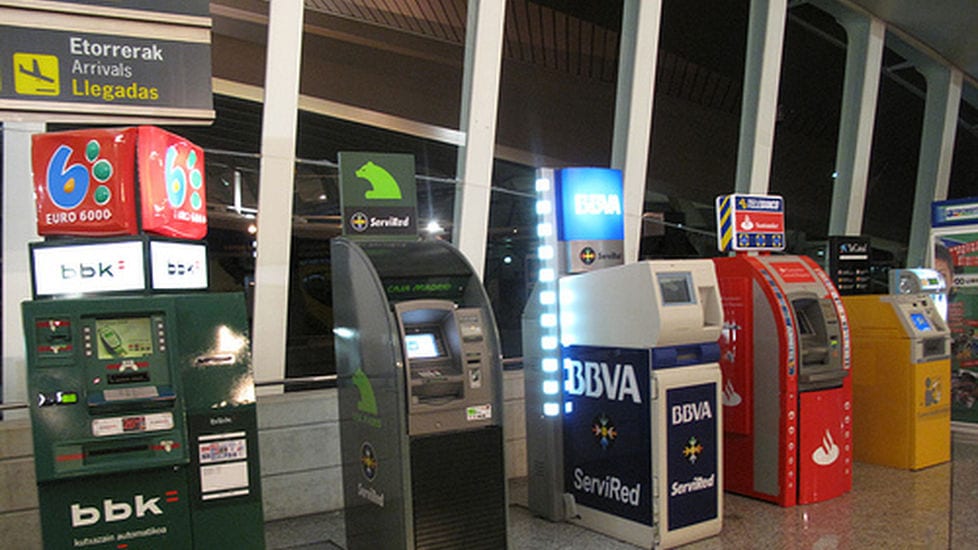
The banking reserve and its functions
When talking about bank reserve of a countryWe are referring to a percentage of its products that must be kept frozen in order to receive public capture. Within the economy we can reflect these as what the central bank does with money; When the central bank uses a reserve, it does so in order to increase or decrease the amount of money held within the country.
High lace
When you have a type of lace that has a tendency to rise, the country's entities begin to have fewer resources to make loans or credits of any kind; This means that the number of reservations must be greater.
By means of this measure, The Central Bank can guarantee that the banks that are governed by this system and they comply with the standards indicated to them; they will always have sufficient capital to be able to lend when required.
What is this system used for?

It is a system that deals with raise money to be able to lend it later and is based on market speculation. Once it has raised money, the bank must keep a small part and another uses it to have money flow, that small part that the bank reserves is the bank reserve.
An example of this is the following
So that you understand it a little better, we are going to give a simple example. The bank captures a client who opens an account with one million euros. Of that million euros, the bank will use a part to be able to invest; but he cannot use the full million so the healthiest thing would be to save 150.000 euros of bank reserve.
Types of lace
Within the lace, there are different types of lace. The more solvent the financial product, the higher the reserve requirement; since that means that at any time the person can ask the bank for money and it must respond.
This is one of the most common cases in checking accounts, since the person needs to have that money at any time in order to use it for their daily payments and the bank must give it to them when they need it.
Most banks prefer not to use the money from checking accounts to invest and they do not pay interest for these types of accounts, since it is money that they cannot work with and you cannot dispose of it.
When the lace of a bench is very lowThis can lead to some mistrust in the person who deposits their savings there, since there is a high probability that they will not be able to get their money back.
Why can the bank not return my money?

This is not normal, especially in current accounts as we have commented in the upper part. However, imagine that a bank has a very bank reserve and begins to invest all the money of its customers. People who have put their savings there, want to get their money back, however the bank cannot give it to them even if it wants to, since that money has been used to make investments and it is not available. If the bank had a high reserve rate, this would not happen since it would have enough liquidity to give the money to the people who ask for it at that time and recover the rest with the investments.
However, in case a moment of financial chaos and all people want to withdraw their money at the same time, it would enter a bank collapse in which said bank would not have the necessary solvency to give the money to all the people who demand it and at this point, an economic rescue of the central bank or the merger of said bank with a larger one would enter, although the second option involves much longer and only happens when banks are bankrupt.
Who is in charge of establishing the reserve requirement
The central bank is in charge of offering a reserve requirement for each bank. Said central bank has the power to do so in public entities or any type of private entity.
What is the percentage of deposits that must be had for said reserve set by the Central Bank
A fit for a public institution is not the same as for a private institution.
For private institutions, there must be a single reserve of 2% of the total when it comes to

1. Deposits and deposits
2. Securities registered in the stock market
When it comes to public sector institutions, what is established is a single reserve of 4% for any type of collection or deposit that is made, in addition to the securities registered within the stock market.
What are the instructions that must be followed when a liquidation process occurs
When entities are in a liquidation process, they do not have any type of obligation when it comes to meeting the reserve requirements, since no compliance of this type will be required.
When a reserve requirement account is in an institution that in the central bank, as it should be established
In private institutions. You must have 100% in euros and that all private institutions in the place have an account with the central bank.
You must have up to 75 of the repayments of financial products that have been issued through the central bank in a period of less than one year
In public institutions. You must have at least 05% of cash regardless of what is established in the liquidity reserves.
In the percentage that remains until the 4% that public institutions must have is completed, it will be for reserve investment certificates issued by the central bank with a repayment of less than one year.
How exactly does the reserve requirement based on the central bank's rules work?
When it begins to rise in reserve, a greater number of entities begin to have fewer memories to be able to grant credits or loans to people who need it. This means that these entities must leave a greater reserve capital in order to be able to cover their expenses and loans during this time. When this happens, there is a lot less money to lend to people and a lot less money circulating, resulting in a decrease in liquidity.
At the moment in which the central bank lowers the reserve requirement percentage, the banks once again have economic solvency and allow them to once again offer loans to corporations and banks at the national level. This makes people begin to have a much higher amount of money to lend and the amount of money that is generated begins to flow.
In this graph you can see a little better what we mean
Within the Central Bank, the following points are determined that all entities must comply with
1- You must determine what is the minimum reserve interest rate that is within the legal and what are the reserve rates that must be established.
2- It should be controlled that all banks and institutions comply with the established type of reserve requirements and if they do not do so, the central bank can impose sanctions on entities that are not within the legal framework.
3- The Central Bank determines which are the reserve requirement periods that must be met and ensures that everyone complies with them.
4- The Central Bank is the one that determines which are the obligations that each of the banks must have when establishing a reserve requirement.
5- Establishes what is the calculation for the application of lace and also teaches the method.
6- Give orders on the points that a report must contain when presenting said requirements.
7- Issues the general rules that a fit must have at the political level.
What are the main effects on the reserve requirement set by the Central Bank
1. The deposits given to customers in each of the banks are much better controlled and with higher security.
2. There is a greater amount of liquidity.
3. It is one of the best tools for controlling the currency of a country.
4. It is possible to control which is the expansion of the credits in each mortgage.
5. Variations in rates may begin to apply
6. It can affect national reserves if good control is not carried out
7. It can put the country at risk in case the reserve requirements are not carried out with precise management.

